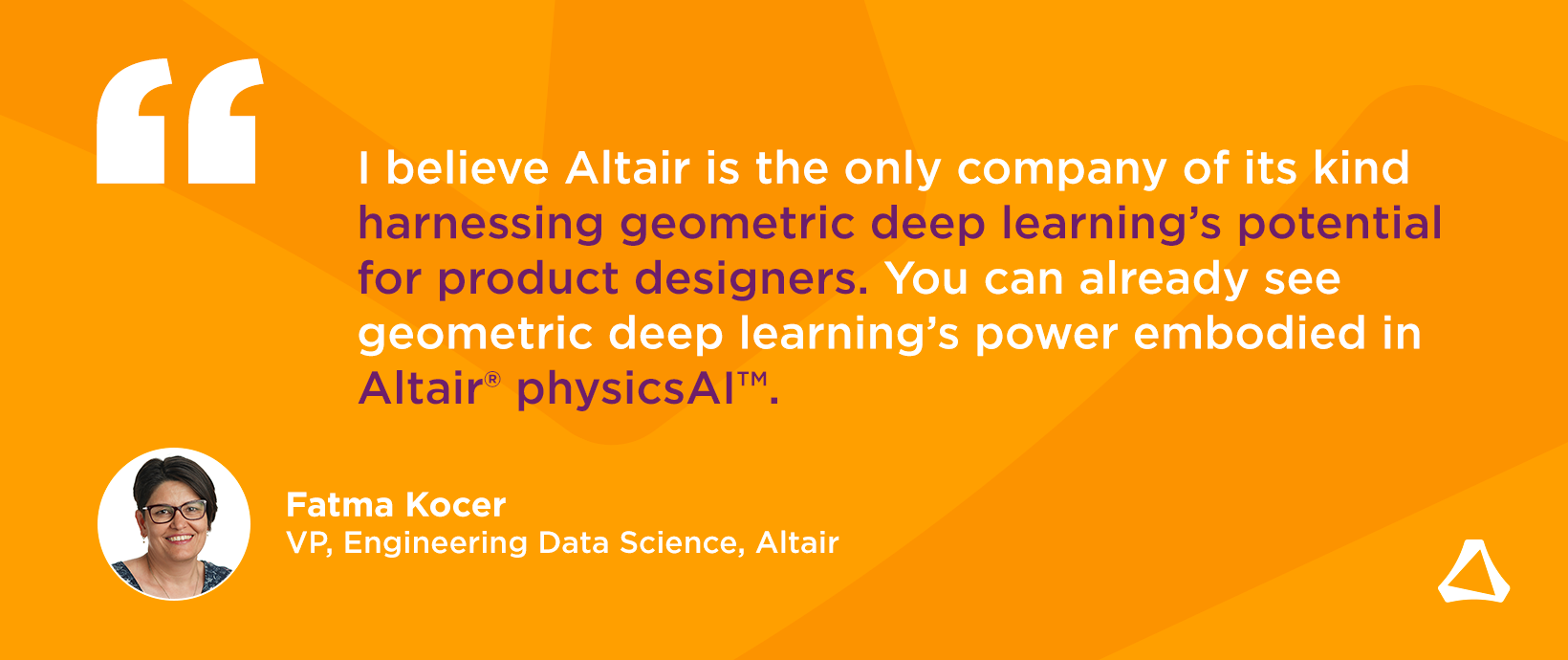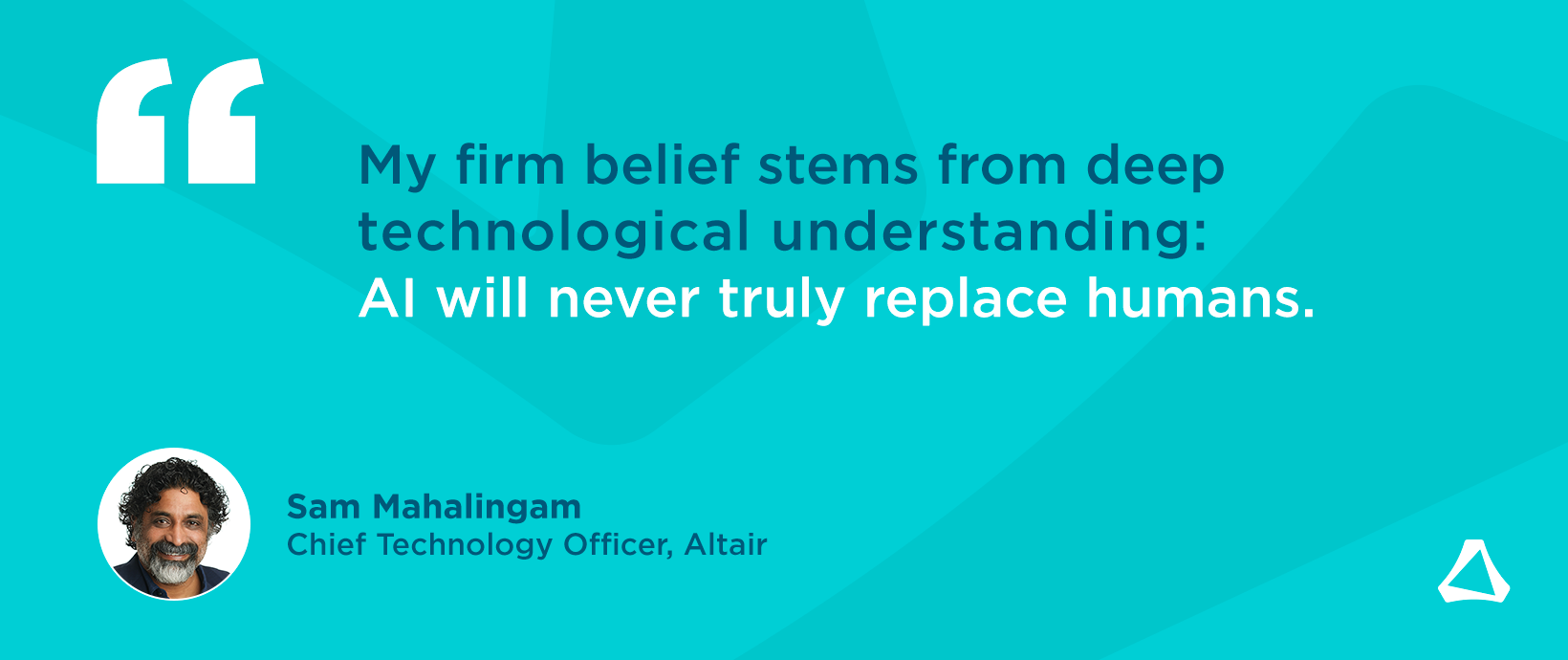Geometric Deep Learning, Altair® physicsAI™, and the Next Era of AI-Powered Engineering

The pace of competition and innovation in the modern global marketplace is fierce and relentless – and only increases as more advanced technologies emerge. The one question engineers, designers, and executives are asking is: How can we accelerate design cycles, supercharge innovation, foster sustainability, and stay ahead of the competition without compromising products’ performance or quality? The answer is AI-powered engineering.
I spend most of my time thinking about AI-powered engineering and fostering its adoption. This puts me in day-to-day contact with its foundational technologies. Specifically, I am talking about geometric deep learning – a technical concept most people are not familiar with, despite its game-changing potential. I – and many of my colleagues – believe geometric deep learning will prove to be a transformative technology that will become standard within a few short years.
Having seen what it can do, I’d like to explain what geometric deep learning is, what impact it can have, how Altair is harnessing it, and what role it may play in the future of AI-powered engineering more broadly.
Geometric Deep Learning: An Overview
As a concept, “geometric deep learning” was coined in 2016 by University of Oxford professor Michael Bronstein. Falling within the broader umbrella of machine learning, geometric deep learning spans “emerging techniques attempting to generalize (structured) deep neural models to non-Euclidean domains such as graphs and manifolds.” In simpler terms, geometric deep learning is neural networks learning to identify 3D objects and patterns on geometric surfaces. This is key for fast physics predictions of 3D engineering design.
Even though geometric deep learning has the power to supercharge traditional machine learning, it has received little fanfare so far in the commercial world; most of the attention it has received has come from technical groups, individual researchers, and academia. It has not captured the attention of the public like computer vision or genAI. However, Altair has been heavily focused on developing and implementing geometric deep learning capabilities for our users throughout the past five years.
I believe Altair is the only company of its kind harnessing geometric deep learning’s potential for product designers. And though it has not been the market’s center of attention just yet, there’s reason to believe geometric deep learning will become as impactful and widespread as genAI promises to be in the very near future. In fact, you can already see geometric deep learning’s power embodied in Altair® physicsAI™.
physicsAI: Harnessing Geometric Deep Learning
Though it seems like a niche capability right now, geometric deep learning promises to fundamentally reshape simulation-centric engineering workflows. This is because geometric deep learning can take your existing simulations – which are not parametric/parametrizable – and allow you to train machine learning models for fast physics predictions. This enables you to make informed decisions for your future designs using past data, helping you speed up the design process and maximize your return on your simulation investments. This is a massive upgrade to the traditional one-simulation-at-a-time, trial and error-based approach many designers and engineers still use. This is precisely what physicsAI offers.
physicsAI delivers fast physics predictions by learning from your historical data without the limits of parametric studies. Accessible through the Altair® HyperWorks® design and simulation platform, it lets users train models using any existing simulation studies, including those from older design concepts, similar parts, or different programs. physicsAI identifies the relationship between shape and performance for any physics, and once trained, its models can deliver predictions up to 1,000x faster than traditional solver simulations. As you can imagine, the ability to undertake more design exploration in less time is a pivotal benefit: it helps companies improve designs earlier in the development cycle and empowers them to bring innovations to market faster than the competition.
The Future of Geometric Deep Learning and AI-Powered Engineering
I believe this is just the beginning of a paradigm shift in the world of (AI-powered) engineering and simulation. Geometric deep learning – enhanced with other machine learning techniques like transfer learning and generative design – will only grow in terms of their capabilities and impact within product design. In my view, for most organizations, geometric deep learning is likely going to be part of the standard AI-powered engineering process in five years or less.
And best of all – beyond its technical capabilities – it is a high-value technology. It is highly valued on the individual level because it empowers engineers in a way that has not historically been possible. And on the organizational level, it will reduce development time and cost while simultaneously increasing products’ sustainability and safety – to say nothing of faster time to market and increased competitiveness.
Overall, we are standing at the dawn of a new era of AI-powered engineering – and I am thrilled Altair is leading the way. With geometric deep learning, data-driven AI-powered engineering workflows are set to help companies innovate in brand new ways by improving performance, smashing silos, and ultimately empowering people to innovate faster and more effectively than ever.
Want to get started? physicsAI is just a click away.
To learn more about Altair’s AI-powered engineering capabilities, visit https://altair.com/ai-powered-engineering. To learn more about physicsAI, visit https://altair.com/physicsai.




